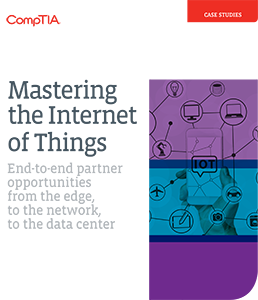 On September 14th, 2015, while most of us were sleeping in our beds, something profoundly game changing occurred ̶ we just didn’t know it yet. The Laser Interferometer Gravitational Wave Observatory (LIGO), a large-scale physics experiment designed to detect gravitational waves, for the first time in human history did just that: it detected a gravitation wave. First theorized by Einstein over 100 years ago, his prediction was that when two massive objects collide into one another, they will produce gravitational waves that are ripples in the curvature of space-time. While his theory predicted the existence of these waves, he thought that they would be too small for humans to ever detect.
On September 14th, 2015, while most of us were sleeping in our beds, something profoundly game changing occurred ̶ we just didn’t know it yet. The Laser Interferometer Gravitational Wave Observatory (LIGO), a large-scale physics experiment designed to detect gravitational waves, for the first time in human history did just that: it detected a gravitation wave. First theorized by Einstein over 100 years ago, his prediction was that when two massive objects collide into one another, they will produce gravitational waves that are ripples in the curvature of space-time. While his theory predicted the existence of these waves, he thought that they would be too small for humans to ever detect.
Flash forward a 100 years to LIGO, an apparatus scientists created to measure differences in distances as small as 1/10,000th the width of an atom’s nucleus. That means it is capable of detecting movements created by gravitational waves. At this point, I am sure you are thinking “so what?” One scientist involved in the project said the significance of this detection is the equivalent of believing that sound exists; but now we have a microphone. This discovery enables us to to observe what up until now was unobservable, and it offers a whole new perspective on the cosmos around us. At this point, I am sure you are also thinking “What does this have to do with IoT?” Just like the discovery of gravitational waves, the significance of IoT’s impact on the tech world and the channel in particular is going to be profoundly earth shaking. We just don’t know it yet.
We’ve all likely seen the numbers – Gartner predicts IoT spending will jump to $235 billion this year. AT&T’s IoT revenue alone will purportedly reach $8 billion in 2016. Cisco is projecting that the market will grow to be $14.4 trillion by 2022! To give these numbers some context, the entire US GDP in 2014 was an estimated $17.4 trillion. Advances in low-power, cheaply available sensors, cloud platforms, innovative security solutions and big data make the sure and steady roll out of IoT solutions all but inevitable. But, just as in our gravitational wave example above, many in the channel are asking “so what?”
Common sentiments in our industry include “my customer is not asking for these solutions” or “I see IoT as a consumer or enterprise play in some business verticals, but I don’t see how this will affect my business.” But changes are coming. As the enterprise embraces IoT platforms and realizes the benefits of these robust applications in healthcare, manufacturing, transportation and agriculture (to name just a few), these technologies and related platforms will inevitably make their way into the channel. As SMB organizations realize the benefits of IoT applications in their homes, it will also increase the appetite for these technologies in more business. It's similar to how the consumerization of IT drove the adoption of smart phones and tablets in small (and big) businesses.
IoT also brings a myriad of opportunities for solution providers who are in tune with their customer’s business needs. The benefits of adopting these solutions will easily outweigh the risks, but at the same time, they will exacerbate current technical challenges such as cloud adoption hurdles, big data comprehension and cybersecurity threats. The business savvy service provider will be ready to help SMBs navigate these challenges with solid solutions. In addition, the more devices that are network enabled will mean more devices to manage and repair. The irony is that IoT will be implemented to more effectively maintain and manage “dumb” devices while introducing a number of other sensors and network equipment that will also require management and repair. The opportunity is ripe for a solution provider well positioned around hardware sales and services, software and connectivity platforms, with proficiency in the regulations and protocols surrounding these technologies.
So, the million-dollar question (or should I say trillion-dollar?) is how do channel professionals best position themselves to be ready for this brave new IoT world? CompTIA, in concert with a number of industry thought leaders, has produced four IoT cases studies involving channel partners who have successfully gone to market with innovative IoT solutions. From Smart Cities and Connected Vehicles from small solution providers to large MSPs supporting the Tour de France, these inspirational journeys involve channel pioneers who have embraced IoT as a line of business. Even better, each is profitable. These case studies were designed to give you real-world examples and lessons learned along the way you can use to examine your own business and prepare for the coming wave of technology. Just as LIGO’s work will bear fruit for years to come, opening up the universe around us, the future belongs to the tech pioneers of today who see the opportunities afforded by IoT and seize them.
Jim Hamilton is Vice President of Member Communities at CompTIA


.png?sfvrsn=ba2fdd36_0)

0